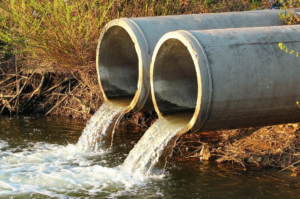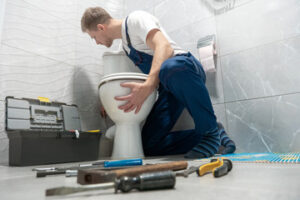Businesses that produce large volumes of liquid waste must adopt proper protocols for its safe disposal. Failure to do so can seriously affect the environment and human health.
Improper disposal of liquid waste can pollute groundwater and harm living organisms. It can also seep into the soil, disrupt plant growth, or kill marine organisms. Click the Liquid Waste Disposal Perth to learn more.

The cost of liquid waste disposal can vary depending on the type of waste and the method used. The best way to reduce the costs of liquid waste disposal is to invest in recycling and energy conversion facilities. These facilities produce renewable power and help reduce the waste that goes to landfills. However, these facilities are usually expensive to build and run. This makes them only feasible in areas with high population density. In New York City, for example, the costs of collecting and disposing trash can run $1.5 billion annually. To cover these costs, the City relies on general city revenues.
Another option for reducing the costs of liquid waste disposal is to encourage businesses to recycle and reduce their use of chemicals and solvents. This method is less expensive and more environmentally friendly than incineration. It also prevents the release of toxic contaminants into the air and water, which can cause harm to the environment.
It’s essential to make sure your employees understand the difference between hazardous and non-hazardous liquid waste. The different types of liquid waste need to be stored in separate bins, so they don’t contaminate each other. The simplest way to do this is by choosing bins with drip edges, which prevent leaking liquids from escaping. You should also ensure that the bins are placed indoors or under a roof to avoid leakage.
If your business produces a lot of liquid waste, you can reduce the costs by investing in recycling and energy conversion facilities. These facilities can turn liquid waste into renewable fuels, reduce pollution, and protect the environment. In addition, these facilities can help you comply with strict environmental regulations.
The most common methods of disposing of liquid waste include dumping, incineration, and recycling. In some cases, the waste liquid may be combined with solid waste to create a fuel source. Incineration is the most effective method for liquid waste disposal, but it can be very expensive. This is because the process releases a large amount of greenhouse gases into the atmosphere.
Environmental Impact
Liquid waste disposal is a serious concern for both homeowners and businesses alike. It must be disposed of correctly in order to ensure that harmful chemicals or heavy metals do not seep into vital water courses and cause environmental damage. Those who dispose of liquid waste improperly can face steep fines and penalties.
There are various requirements for liquid waste disposal, depending on the type and occurrence of the waste. For instance, hazardous waste must be classified and separated from non-hazardous liquid waste, and the disposal methods must abide by all applicable local laws and regulations. This is important because it helps ensure that no harm comes to the environment and that everyone’s health remains protected.
One of the most common techniques for disposing of liquid waste is to dewater it. This technique removes the liquid waste from the solid waste matter, leaving only a more compacted form of the waste that is easier to transport and store. This is often accompanied by a disinfection process that can help kill bacteria and viruses, as well as other pathogens.
Other liquid waste disposal techniques include land application and ocean dumping. Land application involves spreading the liquid waste over the ground, where it is used as a fertilizer or to irrigate crops. This method is more environmentally friendly than ocean dumping, which has been used historically to dispose of liquid waste, but has caused environmental concerns due to its impact on marine ecosystems.
Finally, some liquid wastes can be recycled for reuse. This is typically done in special facilities that are designed to handle specific types of liquid waste. This can be an excellent option for businesses that produce large amounts of a particular type of liquid waste.
Homeowners and business owners can also practice good liquid waste disposal practices by following some simple tips. For example, they should be sure to store all liquid waste in containers that are properly sealed. This will prevent any leaks that could harm the environment or contaminate nearby surfaces. Also, they should ensure that the disposal site is far enough away from any well water sources so that contaminated runoff does not reach them.
Requirements
A variety of different requirements apply to the disposal of liquid waste. Some are more stringent than others, but all require careful consideration. These requirements can be related to the environment or to safety and health issues. For example, a facility that generates liquid waste must have proper storage facilities and a system for recording the amount of waste generated. Those facilities must also have the ability to contain any leaks or spills from the waste containers.
In healthcare settings, the creation of liquid medical waste necessitates specific disposal methods. This is because of the high risk of contamination that can occur when a waste container is exposed to air or light. Depending on the type of waste, a facility may need to use a chemical treatment method or incinerate the waste. Alternatively, the waste may need to be autoclaved to destroy pathogens. For those healthcare facilities without the capacity to treat their waste on-site, scheduled pickups from licensed medical waste disposal services are often used. These companies specialize in treating and disposing of a variety of different types of liquid medical waste, including those that cannot be treated on-site.
Besides safety and environmental concerns, another important consideration is regulatory compliance. Liquid waste is highly regulated and small infractions can lead to costly fines. To avoid this, it is critical that the waste generation process is documented to ensure compliance with all regulations and requirements. This includes the use of only approved containers and ensuring that the chemicals are stored in appropriate containers. It is also important to avoid mixing chemicals that are not compatible and keep all liquid wastes in separate containers, even if they are the same type of chemical.
Moreover, potential waste generators must ensure that all employees who will be handling hazardous waste receive proper training. This training must include hazard awareness and waste management. It is also important to send all records of this training to EHS for verification and documentation purposes. Any new waste that is created should be evaluated by EHS as soon as possible to ensure it complies with waste classification and storage time limits.
Options
Liquid waste is a significant portion of the world’s trash, and there are strict guidelines regarding how this kind of trash needs to be disposed. Several methods are available for this purpose, including dewatering, incineration, and landfilling. Some of these methods are more environmentally friendly than others, but it’s important to consider all of the options before making a decision.
Many liquid wastes require treatment before they can be safely disposed of. Sewage, for example, must be filtered and treated to remove harmful pathogens before it can be released into water sources like rivers and oceans. Some liquid wastes are even recycled to create new products or have useful material extracted from them.
When choosing a disposal method, it’s also important to consider any potential environmental impacts and regulatory requirements. For example, if residents in your area use well water, it’s crucial to make sure that the disposal site is far enough away from surface water sources to prevent contamination.
One option for disposing of nonhazardous liquid waste is composting. This process uses microorganisms to convert the waste into organic matter that’s then turned into fertiliser to help crops and plants grow. This method is environmentally friendly and has the added benefit of being affordable.
Another option is incineration, which involves burning the waste at high temperatures to destroy its hazardous components and reduce the volume of the remaining waste. This is a popular method of waste disposal, but it can have negative effects on the environment. It’s important to choose an environmentally responsible alternative to incineration whenever possible.
Finally, some liquid wastes can be disposed of in landfills if they’re not considered toxic or a danger to the surrounding environment. However, this is only appropriate for small quantities of waste that are not likely to leak. In addition, it’s advisable to avoid landfilling hazardous wastes if possible, as they may contain toxic chemicals that could leach into the soil or water. If you’re planning on using this method, it’s best to partner with a company that offers green waste management services.
